Why are they called Single Silver Low E IGU, Double Silver Low E IGU, and Triple Silver Low E IGU?
First of all, what is a single silver? As the name suggests, there is a layer of silver in the membrane, see below:

What is called double silver Low E coating glass? Naturally, it has two layers of silver. See below
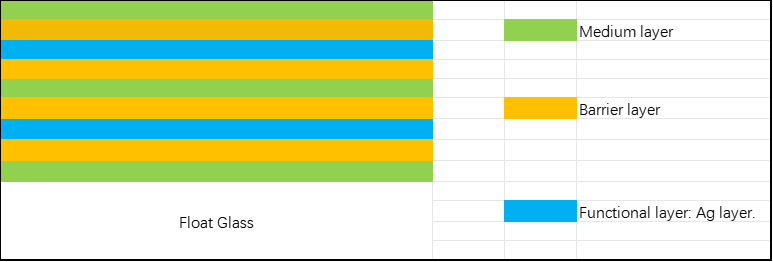
What about triple silver? By analogy, it has three layers of silver, see below:
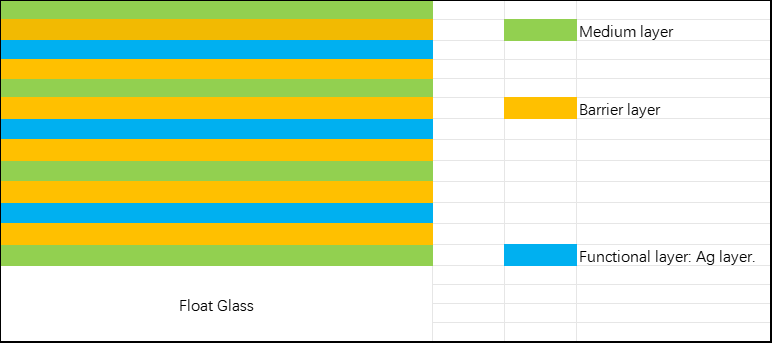
Many friends would ask, with so many layers, the film should be quite thick, right? The answer is no, the thickness of the film is only a few tens to hundreds of nanometers
Specific Performance of Different layers of silver Low E glass IGU
Now that we understand the structure, let’s take a look at the specific performance.
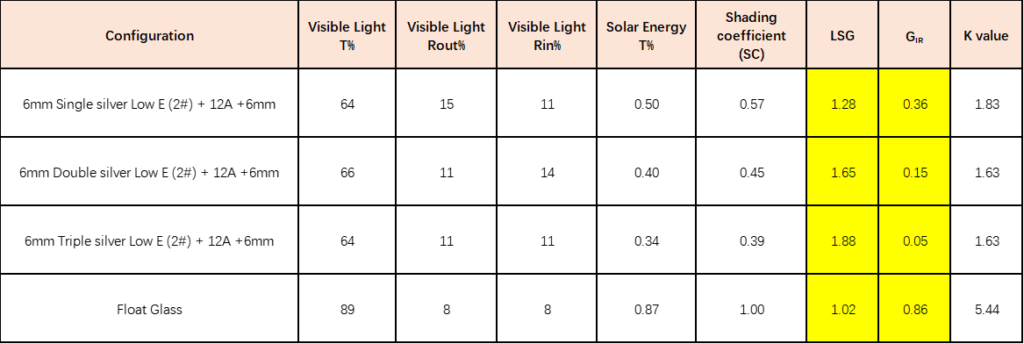
As can be seen from the above table, the heat transfer coefficient K values of hollow glass composed of single, double, and triple silver Low-E do not differ much. In addition, with little difference in the visible light transmission ratio, as the number of silver layers increases, the g value, SC, and gIR decrease successively, especially the total infrared heat transmission ratio gIR (highlighted in yellow in the table), the difference is very significant, while the light-to-heat ratio LSG increases successively.
In order to further compare the g and gIR of several types of glass, one of the professional inspection companies in China (Aoptek) has compiled data on a variety of glasses and plotted a scatter diagram, as seen in Figure 4. As can be seen from Figure 4, the g value and gIR value of single-silver insulating glass are both high (black square in the figure), significantly higher than those of double Silver Low E IGU glass (red dots in the figure) and triple silver Low E IGU (blue triangles in the figure). This means that more solar radiation heat enters the room through the single-silver insulating glass.
Comparing the g and gIR of double-silver hollow glass and triple-silver hollow glass, it is clear that there is no significant difference in the g values between double-silver and triple-silver. However, the gIR has widened significantly, and the gIR of triple-silver hollow glass can be reduced to below 0.06, meaning that less than 6% of infrared heat energy can pass through the glass into the room.
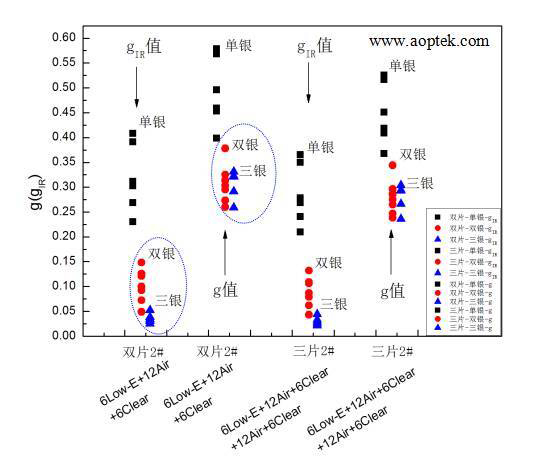
(Data source: Aoptek)
Identify single, double, and triple silver Low E IGU by analyzing the transmission and reflection spectrum curves
Why is there such a big difference in the light and heat parameters of single silver, double silver, and triple silver? Let Dragon Glass take you further into the analysis. The following figure shows the full spectral transmission curves of different glasses. As can be seen from the curve, in the visible light range of 380-780nm, the three types of Low-E glass are almost identical. However, in the infrared range of 780-2500nm, the transmission rate is ordered as single silver > double silver > triple silver. Because of this, the conclusion analyzed in the previous section is single silver gIR > double silver gIR > triple silver gIR.
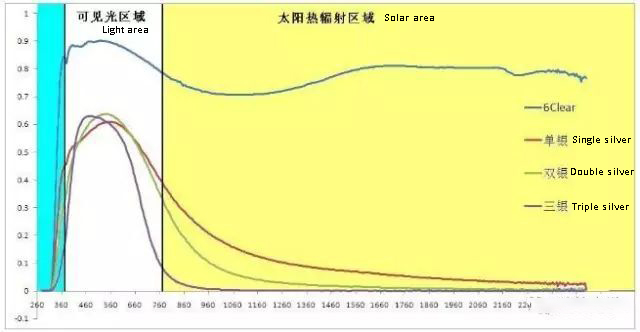
Can you distinguish between single, double, and triple silver Low E IGU glass in already installed windows?
The thin film layer of Low E glass is difficult to identify and evaluate with the naked eye or simple methods. Especially for glass that has been installed, it is not advisable to dismantle the glass, and it cannot be cut into small pieces after tempering, making it almost impossible to test with traditional laboratory methods. Below, we introduce a method to identify single, double, and triple silver Low-E IGU.
It needs to be emphasized that this method is not used to absolutely determine how many silver layers are in the Low-E glass, but to judge the transmission and reflection of sunlight by the Low-E insulating glass, and to evaluate the energy-saving effect of the Low-E insulating glass. However according to current Low-E glass technology and comprehensive glass product parameters from databases, one can generally distinguish between single, double, and triple silver.
The first step is to use an IGU glass emissivity meter to test the glass structure, Low-E position, and emissivity.
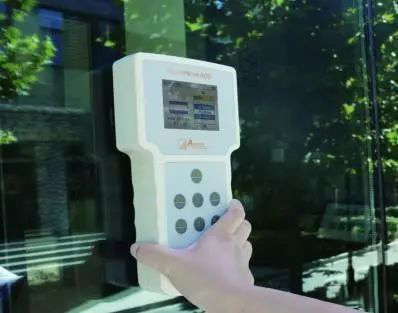

The above image shows three types of glass tested by the insulating glass emissivity meter, where the red line represents the position of the Low-E film layer. In the image, E=0.094 indicates that the emissivity of the Low-E glass is 0.094, and the other two images follow the same principle. The emissivity of Low-E glass can be detected, and based on experience, one can roughly judge whether it is single, double, or triple silver. However, at this point, a conclusion cannot yet be made as to whether it is single, double, or triple silver Low E IGU.
The second step is to test the spectral transmission-reflection curve
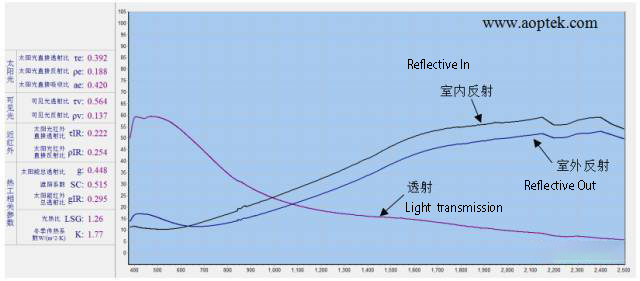
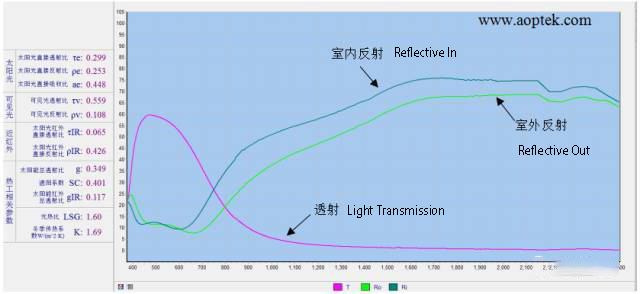
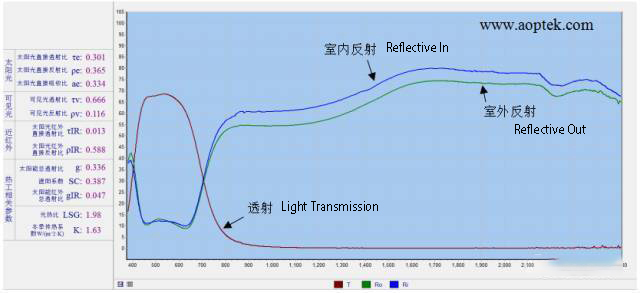
As can be seen from the above image, this instrument provides the complete energy-saving index for the glass (see the far left of the image). From the curve, it is clear that the transmission and reflection in different wavelength ranges of single, double, and triple silver Low-E insulating glass are significantly different. From the shape of the curve, one can generally identify single, double, and triple silver Low-E insulating glass. Of course, distinguishing between single, double, and triple silver is not the ultimate goal. This instrument is mainly used to accurately measure and evaluate the energy-saving effect of the glass.
Dragon Glass as a professional Insulating glass supplier, often produces reliable quality glass for every our clients, and support their business and owners’ projects all over the world, we believe good product will win more market and clients, and inspection a guarantee all our projects and clients.
If you have any questions or inquiries, send us, our team will reply at first moment.
